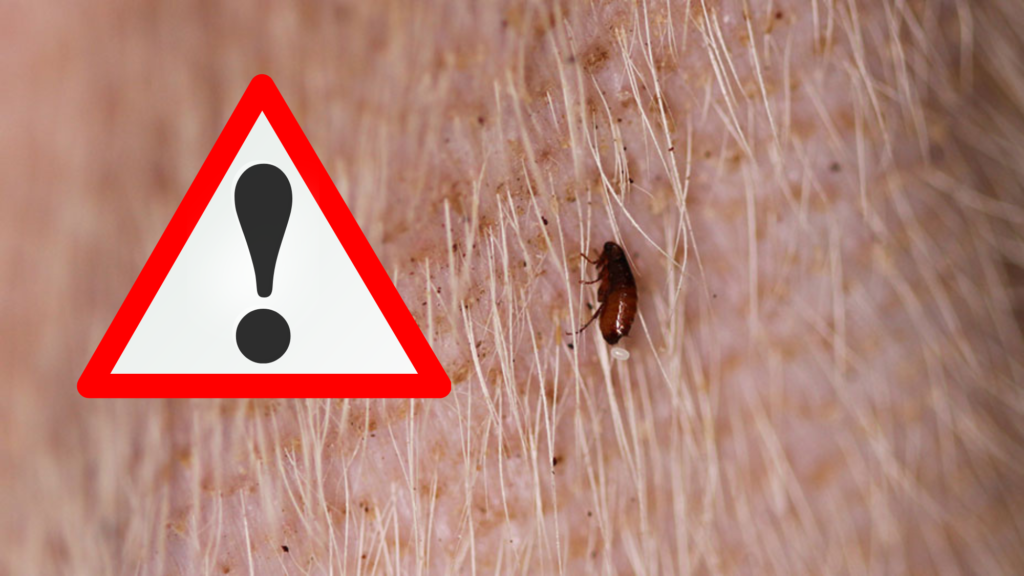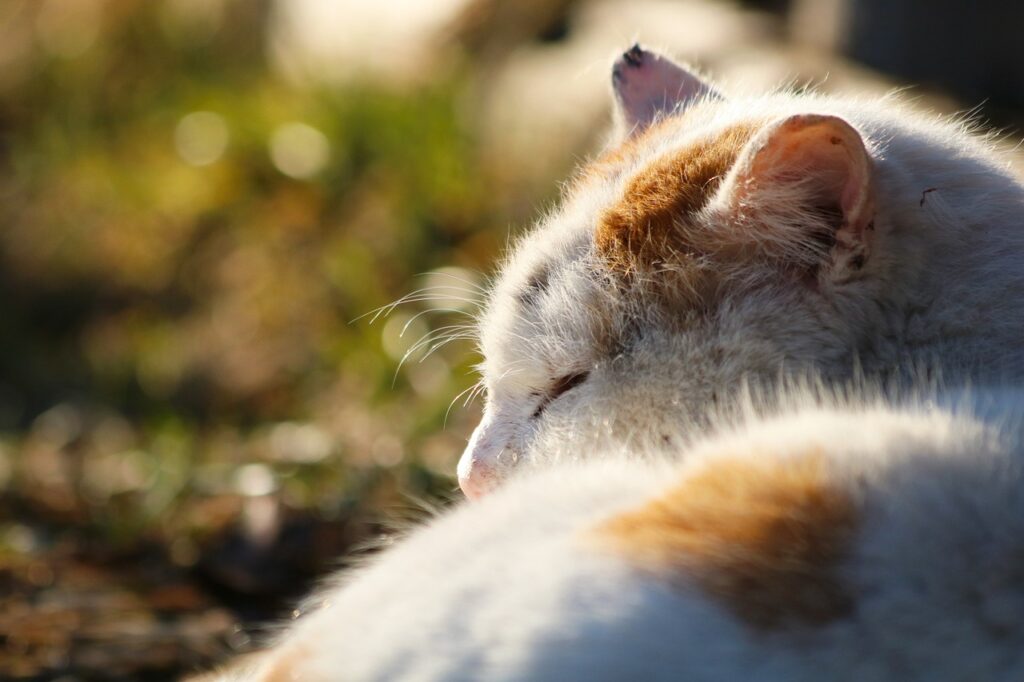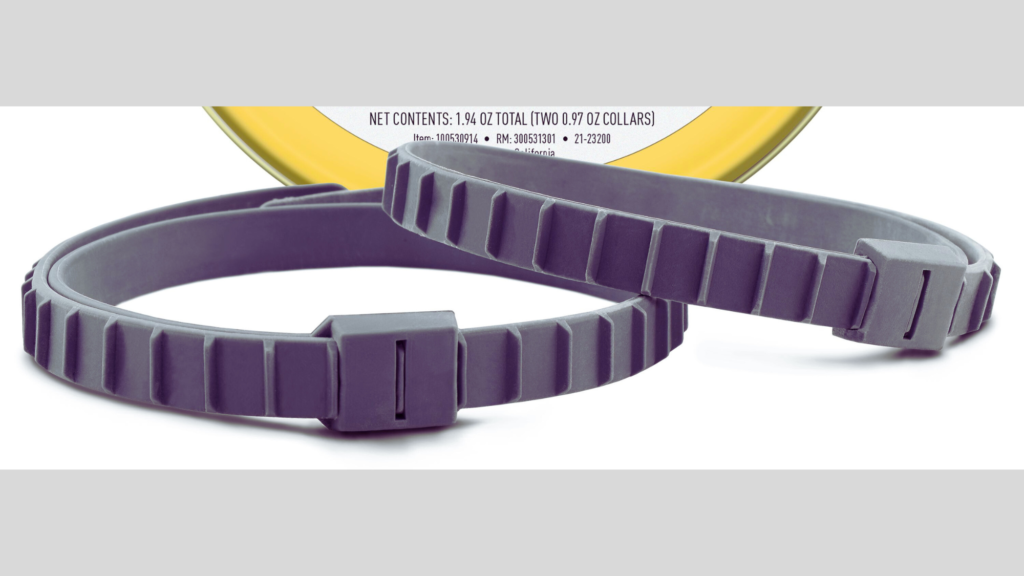| Summary: Dog fleas (Ctenocephalides canis) and cat fleas (Ctenocephalides felis) differ in prevalence, with cat fleas being more common in both species. Key differences of dog fleas vs cat fleas include host preference, reproduction rates, and resistance to treatments. Both cause itching, allergies, and disease transmission. Proper flea prevention, treatment, and environmental control are essential for pet health. |
Dog fleas vs cat fleas: Fleas are a common external parasite affecting both dogs and cats, yet there are important differences between dog fleas and cat fleas. I will explore the biological, behavioral, and environmental aspects of these pests, comparing how they infest different hosts, their life cycles, the health issues they cause, and the strategies used to control and prevent infestations.
Whether you’re a pet owner or a professional groomer, understanding these differences is essential for effective flea management and ensuring the well-being of your furry companions. Dog fleas and cat fleas are different species, but cat fleas (Ctenocephalides felis) are more common and can infest both pets. GPS dog collars help track pets outdoors, reducing flea exposure.
Discover why Afghan Hound collars are wide by exploring the unique characteristics of this breed and how wide collars enhance their comfort and style.
Blog Highlights
ToggleDog Fleas vs Cat Fleas: Quick Comparison Table
| Factor | Dog Fleas | Cat Fleas |
| Species Specificity | Primarily Ctenocephalides canis (dog flea) | Primarily Ctenocephalides felis (cat flea) |
| Host Preference | More commonly found on dogs; may infest other animals | Prefer cats but can infest dogs and other hosts |
| Feeding Behavior | Feeds on blood from dogs; can cause irritation | Feeds on blood from cats; highly adaptable |
| Reproduction & Life Cycle | Similar life cycle; eggs, larvae, pupae, adult | Similar life cycle; rapid reproduction under favorable conditions |
| Health Impact | Can cause itching, anemia, and flea allergy dermatitis in dogs | Major cause of flea allergy dermatitis in cats; can transmit tapeworms |
| Treatment & Prevention | Requires species-specific products; oral and topical treatments available | Often managed with similar methods, but dosage and formulation differ; integrated approach needed for effective control |
1. Introduction: Understanding Flea Infestations
Fleas are tiny, wingless parasites that feed on the blood of mammals. Although they are common in both dogs and cats, their impact, behavior, and control methods can vary depending on the host species. Understanding these differences is crucial for pet owners and professionals who work with animals to effectively manage infestations and prevent the associated health problems.
Dog fleas and cat fleas are similar in many ways—they share a common life cycle and environmental requirements—but they differ in host preference and the way they affect their primary hosts. This guide will delve into the specifics of each type, explaining their biology, health implications, and practical strategies for treatment and prevention. Cat fleas often cause more severe infestations and can spread diseases, making prevention essential. Pet tech products like smart flea combs can help detect infestations early.
2. Biology and Behavior: Species Specificity and Host Adaptation
Dog Fleas: The Specialist for Canines
The dog flea, scientifically known as Ctenocephalides canis, is primarily adapted to live on dogs. Although it can be found on other animals, dogs are its preferred host. These fleas have evolved to thrive in the specific environment provided by canine hosts, which includes factors like body temperature, fur density, and grooming behaviors.

- Adaptation to Canine Skin and Fur: Dog fleas are adept at navigating the coarser fur of dogs. Their claws and body structure are suited to clinging onto a dog’s coat, even during vigorous activity.
- Feeding Habits: They are hematophagous—meaning they feed on blood—and tend to concentrate on areas where the dog’s skin is thinner, such as behind the ears and under the legs.
- Behavioral Patterns: Dog fleas are generally less tolerant of extreme temperature changes and require a relatively stable environment to thrive. They are more likely to be seen in areas where dogs spend time, such as kennels, yards, or dog parks.
Cat Fleas: The Versatile Invaders
The cat flea, Ctenocephalides felis, is the most common flea found on both cats and dogs. Despite its name, it shows a high degree of adaptability, infesting various hosts beyond just cats.
- Wide Host Range: While they preferentially infest cats, cat fleas can easily jump to dogs, rodents, and even humans if the opportunity arises. This adaptability makes them a widespread issue in multi-pet households.
- Feeding Adaptations: Cat fleas have evolved to efficiently feed on feline blood, which tends to be richer in certain nutrients. They also exhibit a higher tolerance for variations in host grooming and behavior.
- Reproductive Efficiency: Cat fleas are particularly prolific. Under ideal conditions, they can reproduce rapidly, with a single female capable of laying hundreds of eggs in her lifetime, which contributes to severe infestations.
Find out what style dog collar is best for hounds to ensure comfort and safety for your furry friend.
3. Life Cycle: From Egg to Adult
Understanding the life cycle of fleas is essential for effective control and prevention. Both dog and cat fleas undergo the same four stages: egg, larva, pupa, and adult. However, slight differences in their reproductive rates and environmental tolerances can affect how quickly infestations spread. Some flea treatments target both dog and cat fleas, but not all are safe for both species. Electronic dog collars can prevent excessive scratching, a sign of flea irritation.
The Flea Life Cycle in Detail
- Eggs: Flea eggs are laid on the host but usually fall off into the environment. They are small, white, and often go unnoticed. The environment, including carpet fibers, bedding, and soil, becomes a reservoir for these eggs.
- Larvae: Once hatched, larvae are worm-like and feed on organic debris, flea feces, and skin cells. They are sensitive to humidity and temperature. Both dog and cat flea larvae thrive in similar conditions, but infestations may be more rapid with cat fleas due to their higher egg production.
- Pupae: Larvae spin a cocoon and enter the pupal stage, during which they develop into adults. This stage can last several days to weeks, depending on environmental conditions. The pupae are well-protected and can remain dormant until triggered by factors such as vibrations, carbon dioxide, or heat—signals that a host is nearby.
- Adult Fleas: Emerging from the cocoon, adult fleas are ready to feed. They are equipped with specialized mouthparts to pierce the skin and consume blood. Adults mate soon after emerging, and the cycle begins anew. Cat fleas, with their prolific breeding, can lead to rapid population increases, while dog fleas might have a slightly slower reproductive pace.
Environmental Influences
Both types of fleas depend on environmental conditions. Humidity, temperature, and the availability of hosts significantly impact the life cycle. For example, high humidity and moderate temperatures can accelerate development, leading to a sudden surge in flea populations. This is why flea control often involves both treating the pet and managing the environment.
4. Health Impact: How Fleas Affect Dogs and Cats Differently

Effects on Dogs
Flea infestations in dogs can lead to several health issues, some of which are directly caused by the parasites and others that result from the body’s response to their presence.
- Itching and Discomfort: The bites of dog fleas cause intense itching and irritation, often leading to scratching, licking, and biting. This can result in skin abrasions and secondary infections.
- Flea Allergy Dermatitis (FAD): Some dogs develop an allergic reaction to flea saliva, resulting in a condition known as flea allergy dermatitis. This condition is characterized by severe itching, redness, and inflammation, especially in areas like the back, neck, and tail.
- Anemia: In severe infestations, the loss of blood can lead to anemia, particularly in puppies or small breeds. Signs include lethargy, pale gums, and weakness.
- Behavioral Changes: The discomfort caused by flea bites can make dogs irritable and affect their overall behavior and quality of life.
Effects on Cats

While cats may show similar symptoms, flea infestations can be particularly problematic for them due to differences in their skin and grooming behaviors.
- Flea Allergy Dermatitis: Cats are highly sensitive to flea bites, and flea allergy dermatitis is one of the most common dermatological issues seen in felines. It can result in intense itching, hair loss, and skin infections.
- Anemia and Weakness: Like dogs, severe infestations in kittens or small cats can lead to anemia. Cats may become lethargic and exhibit signs of distress if blood loss is significant.
- Behavioral Impact: Cats may hide, groom excessively, or show signs of stress due to the discomfort caused by flea bites.
- Transmission of Tapeworms: Fleas can serve as an intermediate host for tapeworms. When cats ingest fleas during grooming, they risk contracting tapeworm infections, which can lead to digestive issues and weight loss.
The ideal size collar for English Springer Spaniel typically ranges from 14 to 20 inches, depending on the dog’s age and neck size, ensuring a comfortable and secure fit.
5. Treatment and Prevention: Effective Strategies for Both Species
Controlling flea infestations requires an integrated approach that addresses both the host and its environment. Although many treatments are similar for dogs and cats, some differences must be considered to ensure safety and efficacy. Regular flea prevention is key to keeping your home and pets pest-free. Dog training equipment can help reinforce flea-check routines in grooming sessions.
Topical and Oral Treatments
- Spot-On Treatments: These are commonly used for both dogs and cats. They are applied to the skin and provide long-lasting protection by killing fleas on contact. However, formulations differ—products for cats are specifically designed to avoid toxic ingredients for felines.
- Oral Medications: Oral flea control tablets are effective for both species, but dosage and active ingredients must be appropriate for the animal’s weight and species-specific metabolism.
- Collars: Flea collars release insecticides gradually over time and are available for both dogs and cats. Ensure that the collar is species-appropriate, as dog collars may be too strong for cats.

Environmental Control
- Cleaning and Vacuuming: Regular cleaning of bedding, carpets, and furniture helps remove flea eggs, larvae, and pupae. This is essential in breaking the flea life cycle.
- Flea Sprays and Foggers: Environmental insecticides can be used in severe infestations. However, these must be used with caution, especially in homes with pets and children.
- Washing Pet Bedding: Regular washing of pet bedding in hot water helps eliminate flea life stages and prevents re-infestation.

Preventative Measures
- Regular Grooming: Frequent grooming and the use of flea combs can help detect early signs of infestation.
- Seasonal Treatments: Flea activity tends to peak during warmer months. Proactive treatment during these times can prevent large-scale infestations.
- Veterinary Consultations: Regular check-ups allow your veterinarian to recommend appropriate preventative measures tailored to your pet’s specific needs.
6. Environmental and Nutritional Considerations
Impact of the Environment
Flea populations are highly influenced by the environment. Factors such as humidity, temperature, and cleanliness play a significant role in the development and survival of flea life stages.
- Indoor vs. Outdoor: Pets that spend more time outdoors are at higher risk of encountering fleas. However, indoor environments can also harbor flea eggs and larvae if an infestation is present.
- Seasonal Fluctuations: Flea populations can surge during the spring and summer months. Maintaining a clean environment during these seasons is critical to controlling flea numbers.
Role of Nutrition in Immune Response
While nutrition does not directly eliminate fleas, a well-balanced diet can strengthen a pet’s immune system, making them less susceptible to the adverse effects of flea bites.
- Healthy Skin and Coat: Nutrients such as omega fatty acids, vitamins A and E, and high-quality proteins support a healthy skin barrier, which can reduce the severity of flea bite reactions.
- Immune Support: A strong immune system helps mitigate allergic reactions to flea bites and promotes faster healing of skin abrasions.
- Hydration: Adequate water intake, aided by a balanced diet, supports overall skin health and helps flush toxins from the body.
The recommended size collar for an English Cocker Spaniel usually ranges from 12 to 18 inches, providing a snug and comfortable fit for your dog.
7. Practical Tips for Pet Owners
Recognizing Early Signs of Infestation
Early detection of flea infestations is key to preventing severe outbreaks. Watch for:
- Excessive Scratching or Grooming: Increased licking, scratching, or biting at the skin can indicate flea irritation.
- Flea Dirt: Small, dark specks in the pet’s fur, which are flea feces, are a clear sign of an infestation.
- Restlessness: Behavioral changes, such as increased irritability or hiding, may be your pet’s response to discomfort.
Effective Flea Management Strategies
- Integrated Approach: Combine on-animal treatments with environmental control measures for best results.
- Regular Preventative Treatments: Use species-appropriate flea preventatives year-round, even in colder months when fleas might still be present indoors.
- Consult Professionals: If infestations persist, seek advice from your veterinarian or a pest control professional who specializes in pet infestations.
Adjusting Treatments for Dogs and Cats
- Species-Specific Products: Always choose flea treatments and preventatives that are specifically labeled for either dogs or cats. Using the wrong product can lead to toxic reactions.
- Monitor Dosage: Follow manufacturer guidelines and consult your veterinarian to ensure the proper dosage based on your pet’s weight and health status.
- Observe for Adverse Reactions: After starting any new treatment, closely observe your pet for signs of allergic reactions or other side effects, and contact your veterinarian if you notice anything concerning.
To find the perfect fit, learn more about what size collar for a Bichon, ensuring your dog’s comfort and safety.
8. The Long-Term Impact of Flea Control
Health and Quality of Life
Effective flea control is not just about eliminating pests; it’s about ensuring the long-term health and comfort of your pet.
- Reducing Allergic Reactions: Consistent flea control minimizes the risk of flea allergy dermatitis, a condition that can severely affect both dogs and cats.
- Preventing Secondary Infections: By reducing excessive scratching and skin damage, proper flea control lowers the risk of secondary bacterial or fungal infections.
- Enhancing Well-Being: A flea-free pet is more comfortable, active, and less stressed, contributing to a better overall quality of life.
Economic and Environmental Benefits
- Lower Veterinary Costs: Preventative flea management can reduce the frequency of veterinary visits for flea-related health issues.
- Environmental Impact: Using integrated pest management strategies minimizes the need for harsh chemicals, making it safer for your home environment and the planet.
- Long-Term Savings: Investing in effective flea control measures today can prevent costly infestations and health problems in the future.
Final Verdict:
While dog fleas vs cat fleas share many similarities, their differences in host preference, reproductive rates, and behavior mean that flea control strategies must be tailored accordingly. Pet owners should recognize that:
- Dogs are primarily infested by dog fleas, which are adapted to their coarser fur and specific grooming habits. Effective management requires products designed for canine physiology, along with regular cleaning of living spaces.
- Cats are mostly affected by cat fleas, which are more adaptable and prolific. Given their heightened sensitivity to flea bites, feline flea control must be aggressive yet safe, often necessitating integrated environmental and on-animal treatments.
Tailoring your flea management plan based on your pet’s species, environment, and specific needs is the key to maintaining a comfortable, healthy home for both you and your furry companions.
Discover the ideal option by exploring what is the best collar material for a Bichon Frise to ensure your pet’s comfort and durability.





